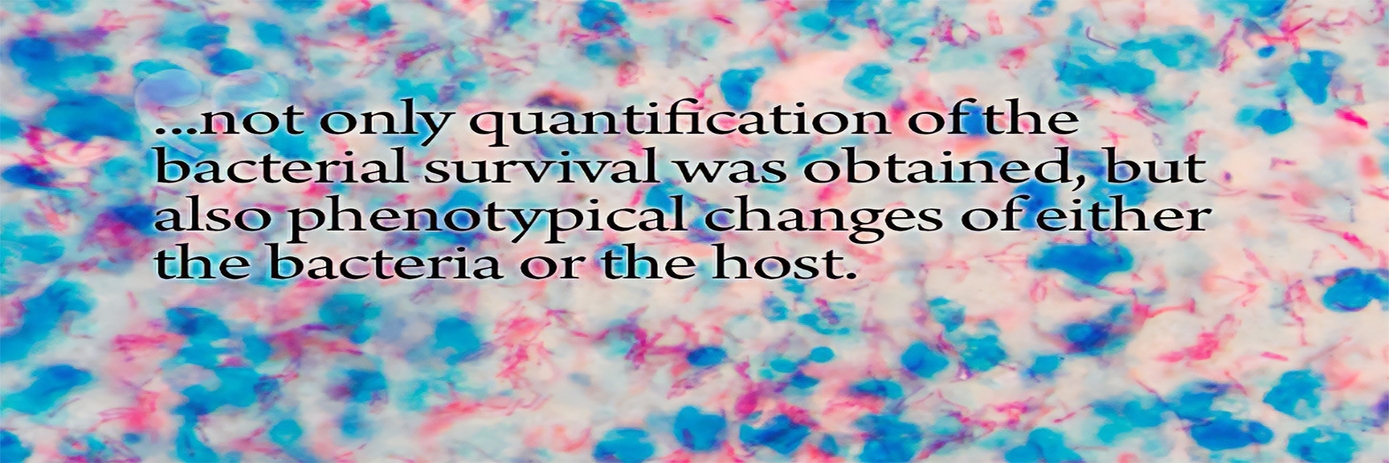Background
Mycobacterium tuberculosis (M. tuberculosis) has been killing humans since the beginning of recorded history.1 Recent estimates claim the disease is responsible for 1.8 million deaths and another 10 million people becoming infected with tuberculous every year.2
Despite our long association with one of the most lethal diseases in history, scientists still have only a limited understanding of how M. tuberculosis bacterium colonizes cells or what factors cause its intracellular persistence.3
Unravelling those mysteries may well lead to the development of new treatments in the ongoing battle against tuberculosis.
The French connection
Dr. Vincent Delorme and his colleagues at the Institut Pasteur de Lille, University of Lille in Inserm, France are aware that their research into M. tuberculosis could be groundbreaking.4 After carefully documenting the development of M. tuberculosis expressing fluorescent assays, the French researchers developed various types of professional phagocytic cells and a Type II pulmonary epithelial cell model to monitor host-M. tuberculosis interactions at the single cell level.
The new method provides considerable value over the colony forming, unit-based methods previously used that did not consider individual host cell parameters in the level of detail that allows researchers to actually see what is happening at and within the single-cell level.
The value of high-content imaging and analysis
“In our experiment, we provided high-content/high-throughput image-based methods to investigate quantitatively and qualitatively the impact of various genetic or chemical modulators on M. tuberculosis-infected host cells at the single cell level,” Dr. Delorme says.
To do so, the research team developed high-throughput screening (HTS) assays that were based on an adaptation drawn from a large set of samples. The image acquisition and analysis tools used were Revvity’s Opera™ high-content screening system and Acapella™ image analysis software.
The Opera is an automated confocal fluorescence microscope capable of capturing images of several fields per well of a 96– or 384–well microplate at high speed (there is now a newer Opera Phenix™ system available that offers even greater throughput and sensitivity).
“Thanks to high-resolution images that can be obtained with such devices, not only quantification of the bacterial survival was obtained, but also phenotypical changes of either the bacteria or the host cell were also observed.” Delorme says.<sup>5</sup>
To achieve those results, the French researchers developed three detailed protocols to investigate quantitatively and qualitatively the impact of various genetic or chemical modulators on M. tuberculosis-infected host cells.
In the first method, the scientists employed a genome-wide small interfering RNA (siRNA) library screen to investigate which host genes are involved in M. tuberculosis intracellular replication.
In the second method, the team screened compound libraries to explore whether small molecule compounds can inhibit M. tuberculosis intracellular replication.
And in the final method, the researchers screened M. tuberculosis transposon mutant libraries to investigate which genes are involved in intracellular trafficking.
All three protocols, including step-by-step cell staining procedures, basic image parameters, and detailed workflows are now used as reference guides for future M. tuberculosis research.6
References:
- Rebar Niemi, “A Brief History of Mycobacterium tuberculosis’ Etiology,” Intellectual Ventures Laboratory, August 20, 2014, accessed April 6, 2017.
- James McIntosh, “Tuberculosis: Causes, Symptoms, and Treatments,” MedicalNewsToday, January 18, 2017, accessed April 6, 2017.
- Vincent Delorme, Ok-Ryul Song, Alain Baulard, Priscille Brodin, “Testing Chemical and Genetic Modulators in Mycobacterium Tuberculosis Infected Cells Using Phenotypic Assays,” in Tanya Parish and David M. Roberts (eds.), Mycobacteria Protocols, Methods in Molecular Biology, Third Edition, Vol. 1285, pp. 387 – 411, 2015, accessed April 6, 2017.
- Nicolas Blondiaux, Martin Mounel, Matthieu Desroses, Rosangela Frita, Marion Flipo, Vanessa Mathys, Karine Soetaert, Mehdi Kiass, Vincent Delorme, Kamel Djaout, Vincent Trebosc, Christian Kemmer, René Wintjens, Alexandre Wohlkönig, Rudy Antoine, Ludovic Huot, David Hot, Mireia Coscolla, Julia Feldmann, Sebastien Gagneux, Camille Locht, Priscille Brodin, Marc Gitzinger, Benoit Déprez, Nicolas Willand, Alain R. Baulard1, “Reversion Of Antibiotic Resistance In Mycobacterium Tuberculosis By Spiroisoxazoline SMARt-420,” Science Magazine, March 17, 2017.
- Vincent Delorme, et. al., op. cit.

































